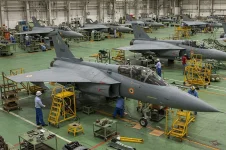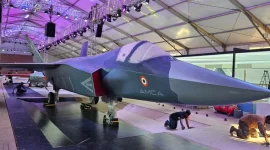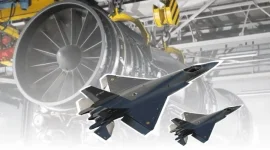- Views: 2K
- Replies: 7
The Indian private sector possesses significant capabilities to develop the advanced 120kN engine required for the nation's futuristic Advanced Medium Combat Aircraft (AMCA), according to V. Venkat Raju, Managing Director of Hyderabad-based VEM Technologies.
However, speaking at a recent discussion, Mr. Raju emphasized that crucial government support, particularly in research, development (R&D), and establishing sophisticated testing infrastructure, is essential for the project's success.
Mr. Raju noted the substantial progress within India's aerospace industry, highlighting its acquired expertise in managing complex system engineering, integration, and process automation.
"The industry has developed a deep understanding of materials, expertise in building test equipment, and strong engineering capabilities," he stated.
He pointed out that VEM Technologies itself employs around 800 engineers across various disciplines, reflecting the sector's talent pool. Furthermore, the availability of advanced design and analytical tools allows for quicker engine simulation, potentially speeding up the development process.
On the manufacturing side, Mr. Raju affirmed India's competence in high-precision manufacturing, which already enables local companies to produce components for major international aerospace firms (OEMs).
He added that the industry is capable of constructing specialized equipment and managing critical components like fuel systems, vital for jet engines.
"We have 40 years of experience producing reliable parts and have grown to handle complete systems," Mr. Raju said, confirming the private industry's readiness for engine development.
This experience forms a strong base for undertaking the indigenous engine project, a cornerstone of India's defence self-reliance goals.
Despite these strengths, Mr. Raju identified key areas requiring government intervention. The development and availability of critical test facilities, especially for high-altitude testing, represent a significant gap that needs state investment.
Likewise, dedicated government backing for R&D in advanced material science is crucial for creating next-generation engine components. "With government assistance in these areas, we can achieve truly indigenous development of an aircraft engine," he asserted.
Sharing concerns previously voiced by Air Vice Marshal Suresh Singh (Retd), Mr. Raju expressed scepticism regarding the possibility of securing full technology transfer through foreign collaborations for fighter engine development.
"Strategically, no one will give true technology or a genuine co-development opportunity to Indian entities," he argued.
While limited partnerships might offer short-term solutions, he believes achieving complete technological ownership necessitates a primarily self-reliant approach. This perspective comes amidst ongoing discussions between India and international engine manufacturers like Safran regarding potential co-development.
Regarding the project's scale, Mr. Raju estimated an investment of ₹12,000 to ₹15,000 crore would be needed to develop, produce, and scale up the AMCA engine manufacturing. He stressed that producing a sufficient volume of engines is vital to make this significant investment economically viable.
He projected a development timeframe of 10 to 12 years, cautioning that the extensive testing phase alone could take over five years. "Building an engine cannot happen overnight," Mr. Raju advised, urging prompt policy decisions to initiate the program.
Mr. Raju acknowledged the positive intent shown by the government, particularly the Defence Minister's emphasis on indigenous engine development under the 'Make in India' initiative.
However, he reiterated the need for urgent, decisive action at the policy level. "An early policy decision is critical to set the development process in motion," he concluded, warning that delays in the initial planning stages could jeopardize the entire endeavour for India's fifth-generation fighter jet program.




